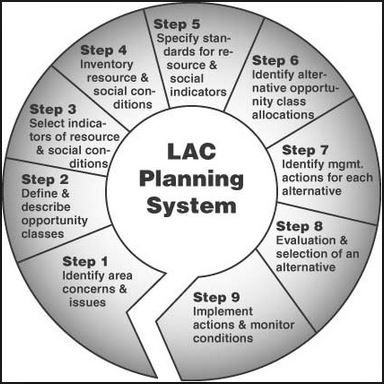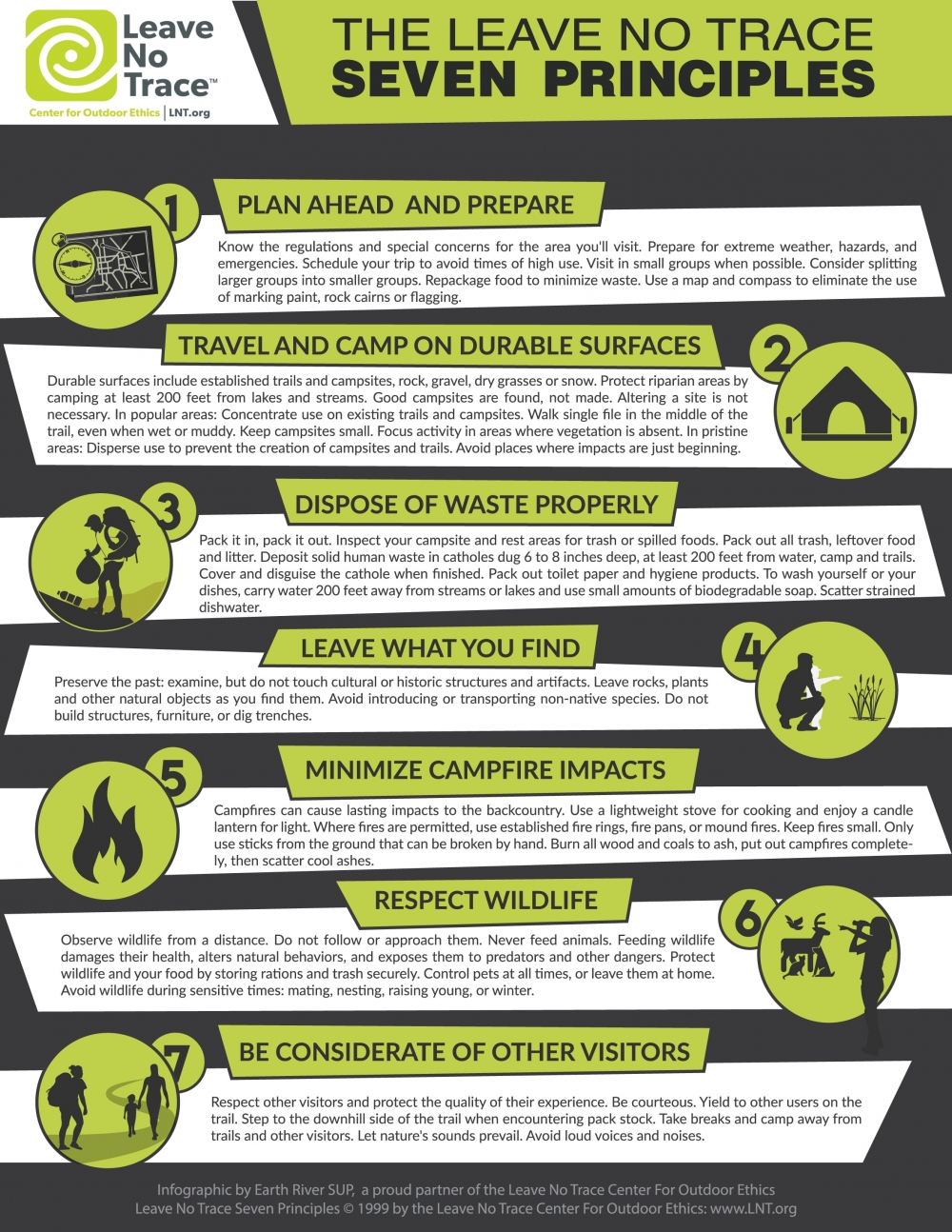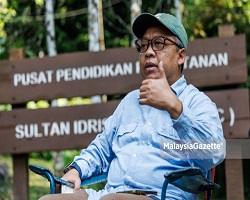Outgrowing awareness of the recreational benefits to health and social wellbeing has created great attention to pursuing outdoor activities in natural areas. Hence, natural places have attracted much attention from people from all walks of life, where they seek countryside, retreats, and natural environments for recreation and leisure purposes. This voluntary participation in a free-time activity that occurs outdoors and embraces the interaction of people with the natural environment is referred to as ‘outdoor recreation’ (Plummer, 2009). Activities such as hiking, picnicking, and bird watching are examples of outdoor recreation performed in natural areas. A high number of users in an area at a time could destroy natural resources. However, it could not be denied the importance of pursuing outdoor recreation as one of the aspects of living in a good way. This has led to a debate on the impact of the activities on natural resources such as soil, vegetation, water, and wildlife (Hammitt et al., 2015). Questions like “How much change can occur before it becomes too much?” or “What is the level of unacceptable change?” (Stankey et al., 1985) become a challenge to park managers. Let’s find out what is sustainable outdoor recreation and how to contribute to support this activity.
Sustainable Outdoor Recreation
Sustainable outdoor recreation is generally related to the effort made to conserve natural resources while offering outdoor recreation to visitors simultaneously. In other words, this concept is to direct balance the management of natural resources, accommodate demands by the visitors, and maintain the quality of visitor experiences. Hence, it is demanding to implement sustainable outdoor recreation, where this kind of activity does less harm our nature. Several principles from environmental studies, such as carrying capacity, adaptive management, environmental justice, and ecotourism, can be adopted to achieve sustainable outdoor recreation (Manning et al., 2011). This paper will cover two important principles – carrying capacity and ecotourism.
The concept of carrying capacity in outdoor recreation mainly focuses on the relationship between visitor use and environmental condition (Marion, 2016). It is a measure based on three categories: biophysical capacity, social capacity, and managerial capacity. According to Fefer et al. (2018), “Biophysical capacity refers to the ultimate limits to growth as constrained by environmental factors” (p.1562). Social capacity refers to the notion that increasing recreation would cause detrimental impacts on the visitor experience, while managerial capacity refers to the ultimate limits to growth as constrained by managerial capabilities and actions (Manning & Lime, 2000). The sustainability of a recreational area must acquire usage limits. The number of users, types of activities, and the kind of resources are among the information that needs to be addressed in measuring a carrying capacity of a particular place. Management frameworks such as Limit of Acceptable Change (LAC) and Visitor Experience and Resource Protection (VERP) are widely used for monitoring and measuring the carrying capacity of recreational areas. The LAC framework emphasises the degree of change or impacts that can be tolerated for the resources in consequence of recreational activities performed towards the resources. Once the degree of acceptance has been reached, the resources will not survive. Hence, it is essential to understand the process of outdoor recreation to recognise the negative impacts of human activities on natural resources. Immediate action can help to avoid the massive degradation that can cause harm to people and the environment in the future.

Figure 1: Limit of Acceptable Change Planning System (LAC)
On the other hand, assessment using the VERP is undertaken in four phases - build the foundation, define existing resources and visitor use conditions, prescribe a range of visitor experience and resource conditions, and lastly, conduct a monitoring and management programme (McCool et al., 2007). Using the VERP is a practical framework that requires park managers to be more proactive, especially in defining the range of conditions to evaluate the limit of acceptable change of the resources. Besides, identifying the range of visitor experiences is also challenging. Hence, the process of the outdoor recreation experience of the visitors needs to be explored to assist the park managers in enhancing their knowledge about the visitor experience.
Ecotourism, often called ‘nature-based tourism’, is “responsible travel to natural areas that conserves the environment, sustains the well-being of the local people, and involves interpretation and education” (TIES, 2015). The use of forests or protected areas for recreational activities can degrade these sites through trampling of vegetation, disturbance of wildlife, soil compaction and erosion, and water pollution. The situation could diminish the quality of the visitor experience through crowding, conflicting uses, and aesthetic implications of resource degradation. Hence the maintenance and development of these areas are based on three elements of ecotourism– conservation, communities, and interpretation- which are ethically managed to be low-impact, non-consumptive, and benefit the local people (Fennell, 1999). A successful ecotourism area should generate economic benefits for communities, organisations and authorities managing natural areas with conservation purposes, provide employment opportunities for local communities, and increase awareness of the conservation of natural and cultural resources (UNWTO, 2002).
Way forward
Sustainable outdoor recreation success by the participation of everybody – recreationists, conservationists, and ordinary users, and should be along with actions at each management level. Since outdoor recreation occurs in natural settings, it is crucial to address the structure, processes, financial support, and commitment to balancing management actions between natural resources and visitor management. Using the management frameworks such as LAC and VERP could be beneficial in monitoring any changes in the natural resources and evaluating the recreational experience of the visitors at the same time. Local community involvement in operational activities is helpful not only for economic growth but also to educational values, as they know the area better than anybody else. Moreover, best practices such as the principle of Leave No Trace (Figure 2) help educate and promote pro-environmental behaviour to visitors, tolerating nature. In brief, with a holistic approach, living in harmony with nature is achievable with sustainable outdoor recreation.

Figure 2: Leave No Trace Principles
References
Fefer, J., De Urioste-Stone, S. M., Daigle, J., & Silka, L. (2018). Understanding the perceived effectiveness of applying the visitor experience and resource protection (VERP) framework for recreation planning: A multi-case study in U.S. national parks. The Qualitative Report, 23(7): 1561-1582.
Fennell, D.A. (1999). Ecotourism: An Introduction. Routledge Publication, London.
Hammitt, W. E., Cole, D. N., and Monz, C. A. (2015). Wildland Recreation: Ecology and Management (3rd Ed). New York: John Wiley and Sons.
Manning, R. E., & Lime, D. W. (2000). Defining and managing the quality of wilderness recreation experiences. In Wilderness science in a time of change conference (Vol. 4, pp. 13-52).
Manning, R., Valliere, W., Anderson, L., Stanfield McCown, R., Pettengill, P., Reigner, N., Lawson, S.R., Newman,
P., Budruk, M., Laven, D., et al. (2011). Defining, measuring, monitoring, and managing the sustainability of parks for outdoor recreation. Journal of Park Recreation Administration. 29:24–37.
Marion, J. L. (2016). A Review and Synthesis of Recreation Ecology Research Supporting Carrying Capacity and Visitor Use Management Decision making, Journal of Forestry, 114 (3): 339–351
McCool, S. F., Clark, R. N., & Stankey, G. H. (2007). An assessment of frameworks useful for public land recreation planning. General technical report No.PNW-GTR-705 (p. 125). Portland,OR: U.S. Department of Agriculture, Forest Service, Pacific Northwest Research Station.
Plummer, R. (2009). Outdoor Recreation: An Introduction. New York: Routledge
Stankey, G. H., Cole, D. N., Lucas, R. C., Petersen, M. E., and Frissell, S. S. (1985). The Limit of Acceptable Change (LAC) System for Wilderness Planning. Ogden, UT: USDA Forest Service, Intermountain Research Station.
The International Ecotourism Society. TIES (2015) Retrieved August 10, 2022, from https://ecotourism.org/what-is-ecotourism/
World Tourism Organization. UNWTO. (2002.). Retrieved August 10, 2022, from https://www.unwto.org/sustainable-development/ecotourism-and-protected-areas
Date of Input: 31/10/2022 | Updated: 31/10/2022 | masridien
MEDIA SHARING






























